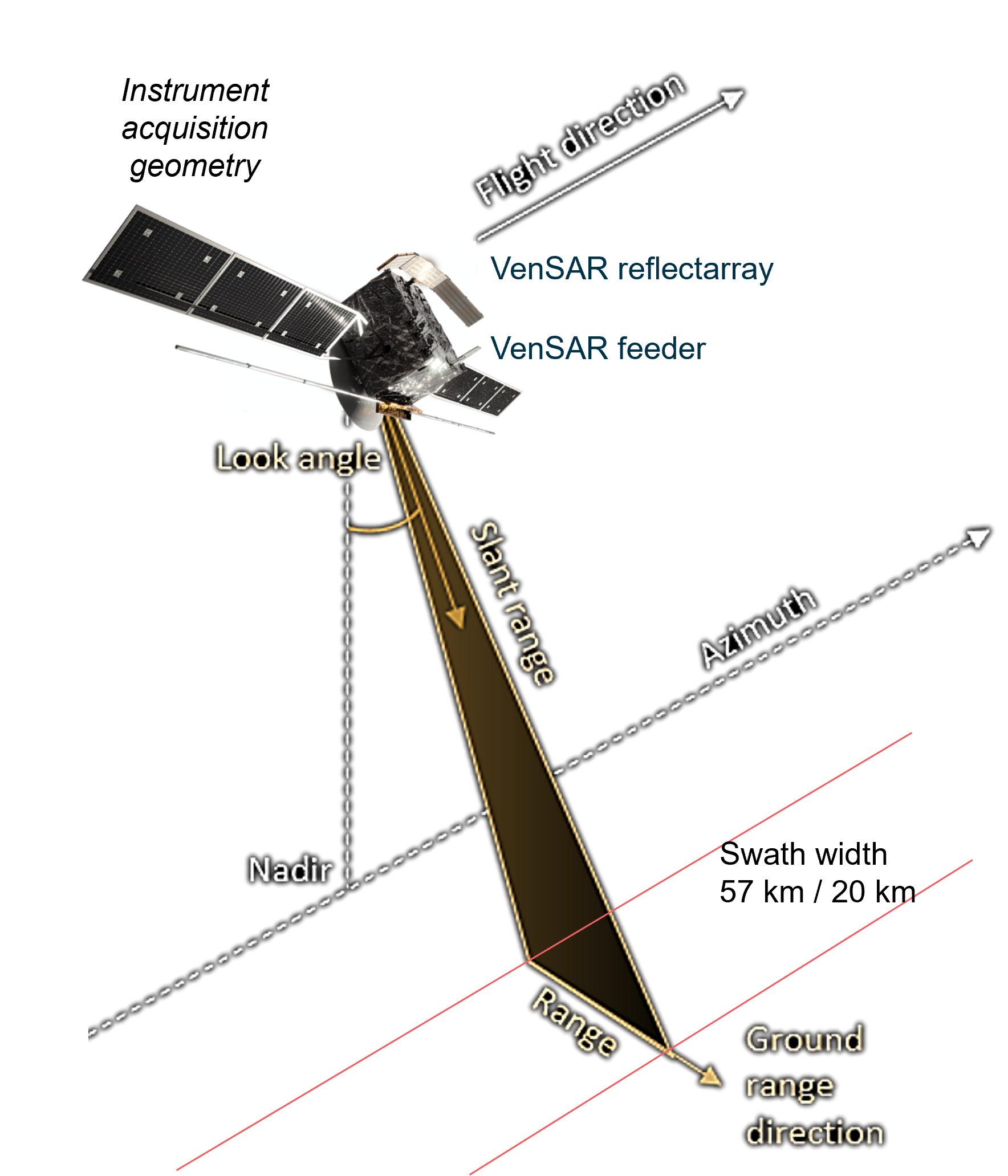VenSAR - EnVision
VenSAR
VenSAR Project Scientist: Scott Hensley (JPL, Pasadena, USA)
VenSAR co-Project Scientist: Daniel Nunes (JPL, Pasadena, USA)
NASA VenSAR Science Team Lead: Lynn Carter (LPL, University of Arizona, USA)
The EnVision VenSAR radar will contribute to addressing the key science objectives of the mission. It will image pre-selected Regions of Interest with resolution of 30 m/pixel and high resolution (10 m/px) across some RoIs. Imaging will be essential for reconstruction of the surface stratigraphy thus revealing geological and chronological relations between surface units. Imaging at two incidence angles will allow reconstruction of surface topography as Digital Elevation Models (DEM) of selected terrains. Quasi-global altimetry would enable quantification of various surface processes. Surface emissivity and roughness will be derived from the imaging in HV and HH polarizations as well as passive radiometry. Comparison to the Magellan images and within the VenSAR data set will allow search for surface changes due to volcanic, tectonic and landscape forming processes from year to decade time scales.

VenSAR observation geometry.
VenSAR will provide several imaging and ranging techniques from a polar orbit: (1) regional and targeted surface mapping, (2) global topography and altimetry, (3) stereo imaging, (4) surface radiometry, (5) surface polarimetry.
Regional and targeted surface mapping
VenSAR will obtain SAR imagery at 30 m (resp. 10 m) resolution, at targets of regions of up to 1000 x 1000 km (resp. 100 x 100 km).
Stereo imaging
Radar stereo or radargrammetry uses image displacements or parallax measurements between radar images acquired at different incidence angles to solve for topography. Unlike radar interferometry, radar stereo does not use phase information, and in fact is usually applied in imaging geometries that exceed the critical baseline precluding standard interferometric techniques. The large swath employed by the VenSAR instrument creates useful stereo imaging geometries that can be used to measure Venus’ topography.
Altimetry
The altimeter beam limited footprint in the along-track and cross-track directions allows to derive a pulse-limited footprint resulting in a vertical resolution of 2.5 m.
Polarimetry
Because the interaction of an electromagnetic wave with a surface can be polarisation dependent, this can be exploited to infer information about an object or scene being observed. VenSAR will measure HH + HV SAR polarimetry.
Radiometry
When analyzed in synergy with polarimetry active measurements, off-nadir radiometry can be used to determine the surface effective temperature, enabling global mapping of polarimetrically resolved microwave radiometry to
- search for thermal anomalies;
- investigate variations of the temperature with altitude where topography is available;
- investigate variations of the temperature with time (e.g., due to varying local hours or ongoing volcanic activity) if repeated observations are planned.
- Removed a total of (2) style text-align:center;
- Removed a total of (1) style text-align:right;
- Removed a total of (1) style margin:0;








































 Sign in
Sign in
 Science & Technology
Science & Technology